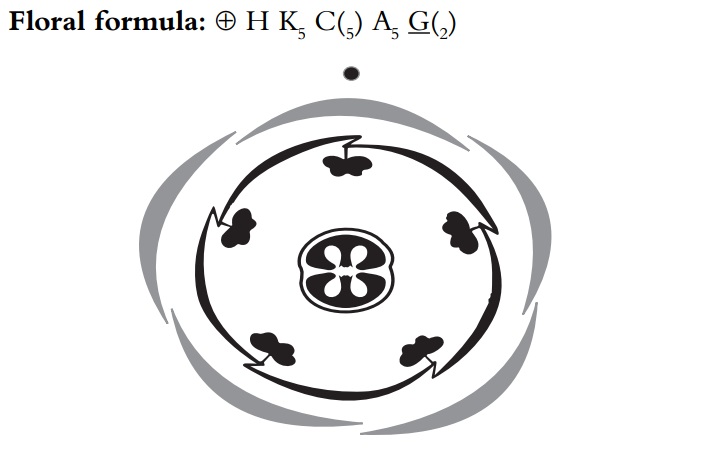Convolulaceae
| Home | | Pharmacognosy |Chapter: Pharmacognosy and Phytochemistry : Study of Different Families
A British systematic botanist J. Hutchinson published his work, The Families of Flowering Plants in 1926 on dicotyle-dons and in 1934 on monocotyledons. Hutchinson made it clear that the plants with sepals and petals are more primitive than the plants without petals and sepals on the assumption that free parts are more primitive than fused ones.
CONVOLULACEAE
Habit: These are mostly twiners, often with latex and
bicollateral vascular bundles or internal phloem.
Leaves: The leaves are simple, alternate and exstipu-late.
Inflorescence: The inflorescence is cymose. The flowers are
regular, bisexual, hypogynous, often large and showy.
Calyx: There are five sepals, usually free. The odd one is
posterior, imbricate and persistent.
Corolla: There are (5) petals, is gamopetalous, funnel
shaped, twisted in bud and sometimes imbricate.
Androecium: The five stamens are epipetalous, alternat-ing
with the petals.
Gynoecium: There are (2) carpels, rarely more, connate. The
ovary is superior, with a disc at the base. It is two celled, with two ovules
in each cell, or sometimes four-celled with one ovule in each cell. The placentation
is axile.
Fruit: The fruit is a berry or a capsule.

Examples: Sweet potato (Ipomoea
batatas), jalap (Ipomoea purga), etc.
